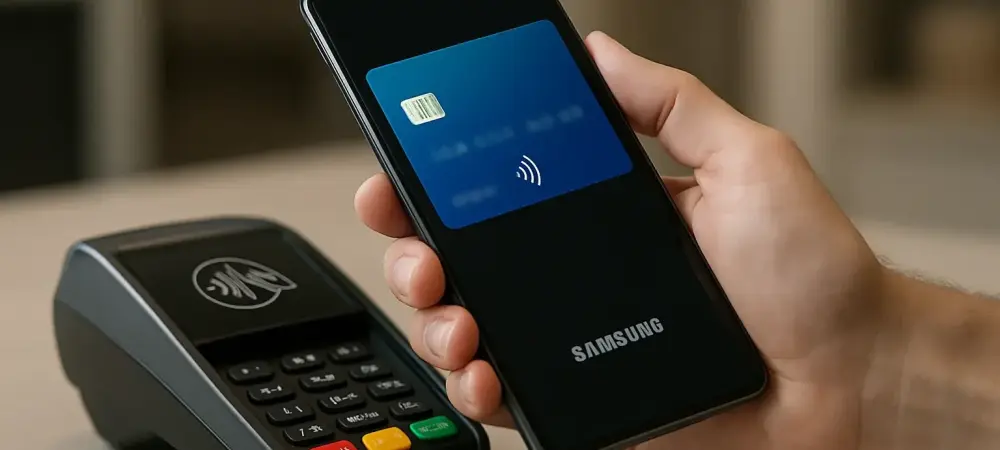In the rapidly evolving digital payment landscape, Samsung Wallet’s integration of the Buy Now, Pay Later (BNPL) feature signifies a substantial leap toward transforming payment convenience for consumers. This strategic move highlights the growing significance of flexible payment options in today’s market, especially as consumer demands increasingly veer toward solutions that accommodate both spontaneity and budget management. Consequently, industry watchers are keen to dissect how this development can potentially reshape both consumer experiences and merchant service offerings.
Unveiling the Competitive Frontier
Samsung’s decision to launch BNPL capabilities marks an innovative stride, reflecting broader trends in the payment industry where versatility and user-centric solutions are pivotal. This initiative not only broadens the functional scope of Samsung Wallet but also harmonizes with prevailing consumer desires for integrated, adaptable financial tools. As digital transactions become more embedded in daily life, understanding the implications of this evolution—particularly against the backdrop of established players like PayPal and Block—is essential for forecasting the trajectory of digital financial services.
Strategic Partnerships: Amplifying Market Reach
Understanding the Splitit Alliance
Central to Samsung’s BNPL endeavor is its partnership with Splitit, a renowned BNPL provider. This alliance allows Samsung Wallet to facilitate seamless transaction options for Visa and Mastercard users without necessitating new accounts or credit evaluations, streamlining the process for consumers. Such collaborations underscore a significant market trend: the integration of complementary fintech services to enhance user experience. This strategic integration presents a dual-edge—while it promises an enriched service portfolio, it requires robust data security frameworks and consumer expectation management amidst stiff competition.
Comprehensive Financial Ecosystems
This strategic development aligns Samsung Wallet with an industry-wide shift toward multifaceted financial ecosystems, akin to the super app model pursued by players like Klarna. By integrating BNPL, Samsung positions its wallet to compete with and surpass other market leaders like Google Wallet and Apple Pay. The expansion of the wallet into a comprehensive financial service hub indicates Samsung’s drive to offer varied and versatile user options. However, maintaining user trust and operational fluidity remains imperative as Samsung navigates this competitive financial terrain.
Focusing on Regional Diversity
Implementing the BNPL feature in selected U.S. states highlights Samsung’s acknowledgment of the geographically nuanced market dynamics. Factors such as economic conditions, consumer predispositions, and regulatory landscapes significantly influence financial innovation’s reception and success. Thus, Samsung’s approach must be both nimble and perceptive, customizing its strategies to meet diverse market demands. Addressing misconceptions about financial flexibility and expanding the feature’s impact necessitates a thorough understanding of demographic and regional specifics.
Future-Proofing the Digital Payment Landscape
Looking forward, the future of digital wallets is poised for further transformation guided by technological advancements and evolving regulations. As digital finance becomes more personalized and secure, platforms like Samsung Wallet must adapt to these changes. The growing reliance on AI and blockchain presents both challenges and opportunities, requiring platforms to innovate continuously. Projections indicate an increasing shift toward integrated financial solutions, with emphasis on personalization and user-centric designs as key drivers of engagement.
Strategic Implications and Recommendations
With Samsung Wallet venturing into the BNPL domain, both consumers and businesses must consider these developments’ broader implications. For consumers, the value lies in enhanced purchasing flexibility; for businesses, this means opportunities to increase customer retention and boost sales. To leverage these innovations effectively, stakeholders should prioritize staying updated with emerging payment trends, enhancing digital security practices, and adapting to evolving consumer preferences for seamless and flexible payment solutions. In conclusion, Samsung Wallet’s BNPL integration signifies a pivotal moment in digital payments, showcasing the perennial need for innovation in financial solutions. As consumers increasingly seek streamlined and multifaceted financial pathways, Samsung’s strategic initiatives illustrate its alignment with these evolving demands. By forging a path of innovation, Samsung has not only cemented its presence in the competitive digital payments arena but also highlighted the ongoing evolution and potential of digital wallets to shape future financial landscapes.

